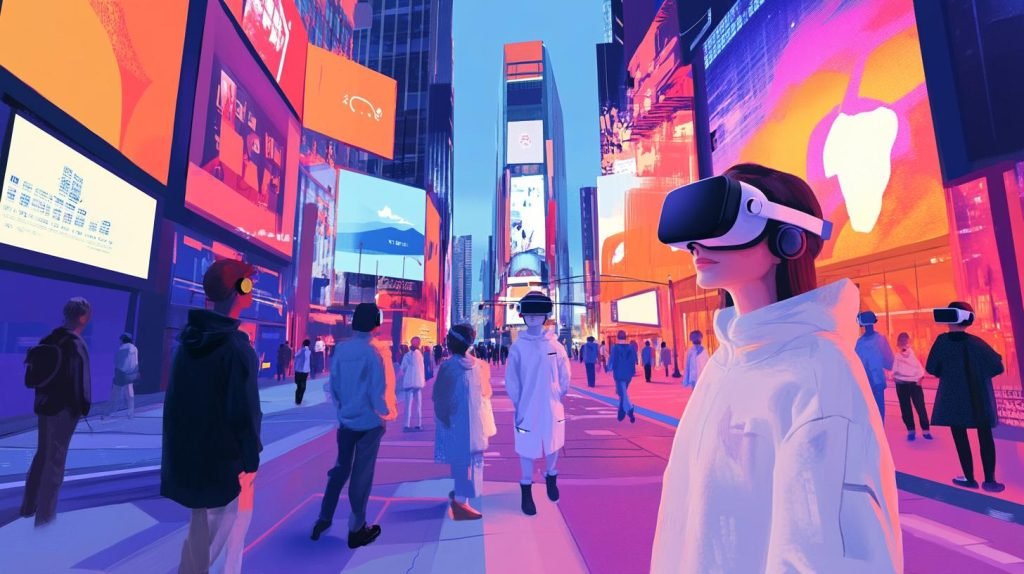As the audiovisual landscape evolves, brands must navigate advancements in technology and shifts in consumer behaviour to create engaging, immersive experiences that resonate with audiences.
As we look forward to the year 2025, the realm of audiovisual design is undergoing significant transformations, driven by advancements in technology, shifts in consumer behaviour, and the heightened demand for immersive content that captures the imagination. This shift is not only altering how brands communicate with their audiences but also transforming the ways in which consumers interact with media and how narratives unfold across diverse platforms.
The rapidly evolving landscape of audiovisual technology is welcoming innovations that seem to verge on science fiction. With developments like virtual reality (VR) allowing users to immerse themselves in alternative realities, and artificial intelligence (AI)-generated soundscapes that adapt in real-time to a listener’s emotional state, the boundaries of what’s possible are continually being pushed.
In this increasingly complex, multisensory environment, the convergence of various media—from mobile applications and social media platforms to smart home devices and dynamic interactive billboards—demands sophisticated navigation. Brands that can adeptly maneuver through this intricate landscape are poised to gain a considerable edge over their competitors.
Among the most prominent trends poised to redefine this field is the rise of immersive and 8D audio. As VR and augmented reality (AR) technologies continue to grow, there is a burgeoning demand for spatial audio that affords a profound sense of presence and depth in digital environments. This trend is not confined to VR and AR, as even conventional video content is starting to incorporate more complex audio techniques to enhance engagement. A cutting-edge development within this realm is 8D audio, which offers a 360-degree experience, enveloping the listener with sound from all directions.
Furthermore, brands are moving beyond traditional sound logos towards a more nuanced sonic branding strategy. Sonic branding, an audio-centric approach analogous to visual branding, is becoming a vital component of brand identity. It involves creating unique audio elements that are immediately recognisable and evoke specific emotions. Leading companies like Coca-Cola and Apple have pioneered this by embedding distinctive sound motifs into their branding across various touchpoints, enhancing recognition and emotional resonance globally.
AI is anticipated to play a pivotal role in shaping the future of audiovisual design. AI-driven personalisation presents an exciting frontier, offering the potential for content that adapts dynamically to user preferences and behaviours. For instance, it is conceivable that video advertisements could adjust soundtracks based on the perceived emotional state of viewers, creating more tailored and engaging interactions. However, the integration of AI in creative processes raises questions about maintaining the essence of human creativity and ensuring ethical standards, a principle emphasised by companies like Epidemic Sound.
Additionally, the concept of emotional intelligence in audio design is gaining traction, calling for a sophisticated application of sound to elicit specific emotional responses. This approach aligns closely with brand-building efforts and has been exemplified through campaigns like Epidemic Sound’s ‘A Sound For Every Feeling’, which strategically uses audio to align with emotional contexts.
Finally, we are witnessing a trend towards cultural fusion and representation within audiovisual design. As brands cater to a global audience, there is a move towards integrating diverse cultural influences into their audio-visual content, crafting innovative fusion styles that appeal to a worldwide demographic. This approach not only enhances authenticity but also broadens the appeal across various cultural landscapes, showcasing a brand’s commitment to diversity.
As the industry steers towards these exciting developments, brands will need to embrace experimentation and gain a deeper understanding of how audio and visuals interact. Those who consider sound as an essential component of the user experience, rather than an afterthought, will be well-equipped to create rich, immersive experiences that resonate meaningfully with their audiences, thereby enhancing engagement and brand loyalty in a competitive digital landscape.
Source: Noah Wire Services





